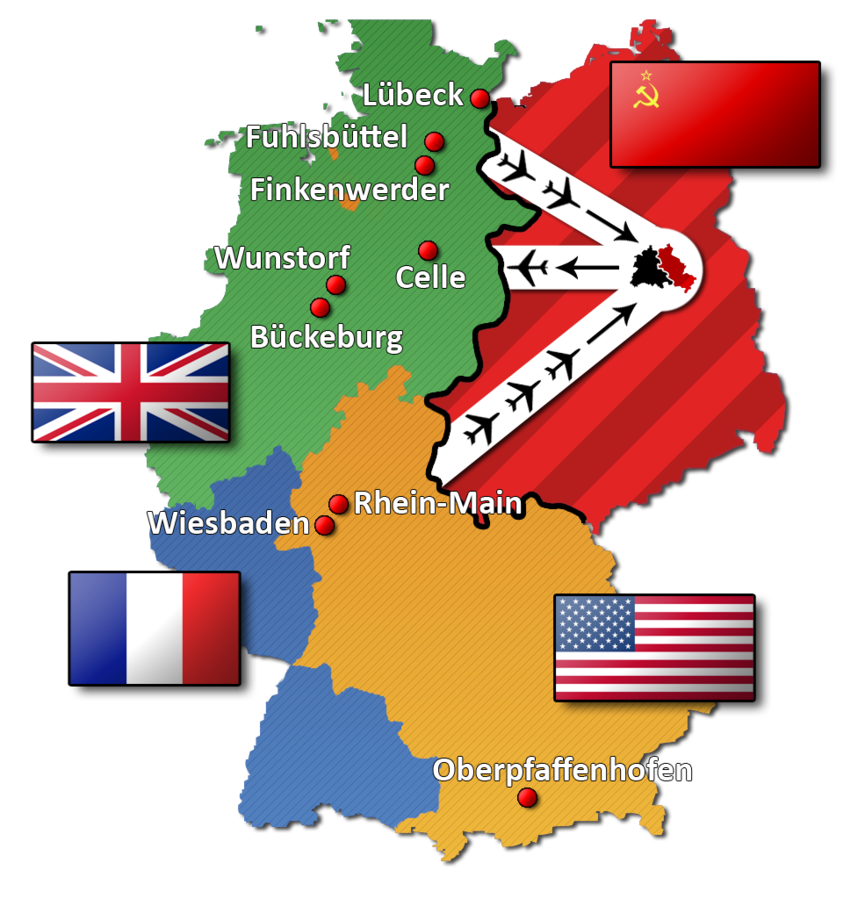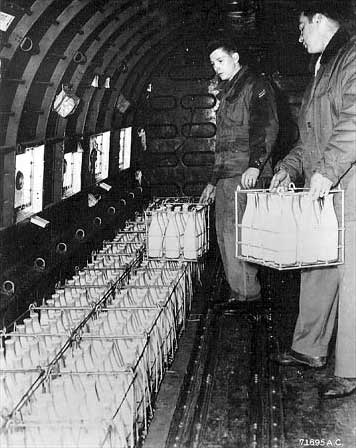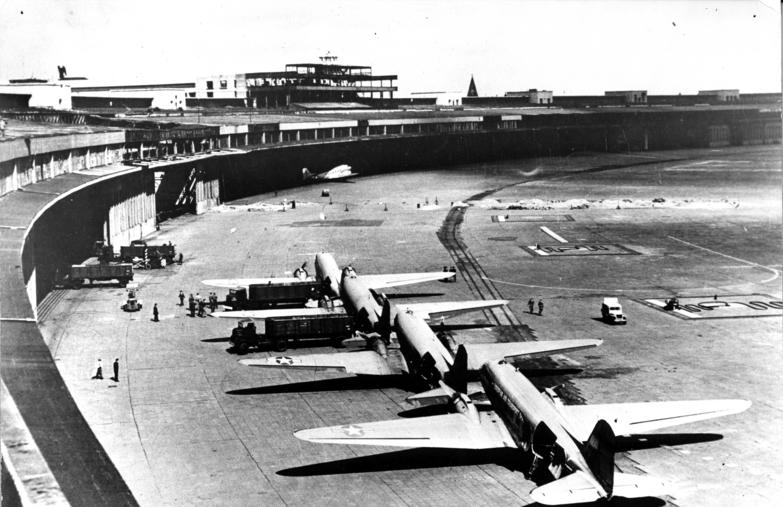I’m old enough to have lived during the the last half of the Cold War and remember different ways it impacted my life, especially since I grew up on military bases in the U.S. and other countries. The Berlin Airlift was part of the beginning of the Cold War.
After Germany was defeated in World War II, that country was split between the victors, the Allied Powers. The United States, the United Kingdom, France, and the Soviet Union would all occupy different areas of Germany, as indicated in the map below.

They also agreed to divide Berlin, the capital of Germany, into four parts even though that city was deep in the Soviet territory. You can see the divided Berlin in the red area above.
Although they had worked together to defeat the Axis Powers of Germany, Japan, and Italy, the Soviet Union had different values and aims than the other Allied Powers. Those differences were the cause of the highly armed and globally concerning Cold War.
The Soviet Union wanted all of Berlin and all of Germany, and in 1948 they set up a blockade of all highways, railroads, and canals into Berlin. The Soviets wanted to choke off supplies from the outside because they believed that the people of West Berlin, once they were no longer getting supplies from the other powers, would turn to them for supplies and be so grateful that they would become Soviets.
Even though the people of West Berlin had already shown in their municipal elections that they did not want to join with the Soviets, the Soviets seemed to believe that could still happen and once it happened, the other powers would just…leave?
By the terms of the agreements signed to divide Germany, the Soviet Union was allowed to block access to the highways, railroads, and canals. But the agreement explicitly stated that three air corridors would be available for access.
So began what the United States called Operation Vittles. The U.S. and UK agreed to fly necessary supplies to the people of West Berlin, a procedure they believed would only last a couple of weeks.

Just think of what you would need if you were stuck without any stores. We’re talking about supplying more than two million people with food, clothing, water, medicine, and coal. Even with their supplies being airlifted in by plane, they still lived with rationing and with a thriving black market.
After almost a year, the Soviets realized that they weren’t going to win this one and removed the blockade. We kept flying in supplies for another couple of months, just in case, and the Berlin Airlift officially ended on September 30, 1949.

U.S. and British forces (with help from other allies) had delivered more than two millions tons (yes, tons) of supplies on more than 275,000 flights. At the height of airlift efficiency, one plane was landing in West Berlin every 30 seconds.
I have two resources I recommend if you want to learn more about the Berlin airlift. Original documents are available at the Truman Library. You can also check out the Berlin Airlift Historical Foundation, which has information, photos, and videos.
The reason I remember this story, and think people younger than me should hear about it, is because this was a good thing. People helped and people were helped. I think it’s helpful to be reminded of stories like this.

Loved your article Cathy, maybe at some later time you could go into the erection of the actual Berlin Wall.
That’s funny, because I had already decided to that. The Berlin Wall is the BIG step in the division of the city. Very excited to do that.
Thanks for reading!
Cathy